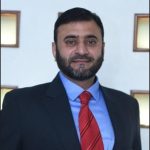Plant diseases and pests pose a threat to a wide range of important agricultural products, including cotton, sugarcane, wheat, and fruits like papaya, citrus, and bananas, as well as vegetables like tomatoes. These significantly damage crops, affect the quality of fruits and vegetables, and destroy entire harvests. Each year, diseases and pests destroy about 42 percent of the world’s entire agricultural production. It is highly important to develop solutions that mitigate the impacts of plant viral diseases on crops, as the annual cost for production losses due to these diseases is estimated to be over $30 billion. This requires studying plant pathogens (i.e. viruses) that are causing epidemic diseases, developing diagnostic strategies for early detection before they reach epidemic levels, and deploying strategies to reduce the impacts of plant virus diseases.
Pakistan’s agriculture industry is critical to the economy, accounting for around 24% of the country’s GDP (Pakistan Bureau of Statistics). It is the country’s primary source of income and economic assistance. Pakistan is one of the top ten major wheat-producing countries in the world in terms of area under cultivation, total production, and yield per hectare. Wheat is threatened by Barley yellow dwarf virus (BYDV), a highly destructive plant virus that not only affects wheat, and barley, but other cereal crops as well, causing significant economic losses in agriculture. Severe infections may cause yield losses ranging from 10% to 80%, depending on the virus strain, host plant susceptibility, and environmental conditions.
Pakistan ranked third in the world for chillies production, following China and India, making chillies the most lucrative crop in Indo-Pakistan. The chillies crop is seriously threatened by the chilli leaf curl disease (ChiLCD), Severe infections can result in yield losses ranging from 30% to 100%.


Pakistan only uses polymerase chain reaction-based methods or phenotypic (symptomatic) appearance for the diagnosis of plant viral infections. The PCR method is expensive, time-consuming, and not cost-effective when dealing with several samples. Since no such kits are made in Pakistan, research labs import kits for the detection of viruses or other diseases. It is imperative to study these viruses and expand the range of diagnostic tools so that we can deploy strategies to control these diseases.
We have developed polyclonal antibodies for the ELISA-based detection of Barley yellow dwarf virus (BYDV) and Chili leaf curl Indian virus by the overexpression of recombinant coat protein genes in the mouse model. The raised anti-BYDV CP immunoglobulins (IgGs) and anti-ChiLCIV detected the recombinant BYDV CP and ChiLCIV even at 100 pg/mL and 1000-time diluted crude extract of proteins from BYDV-infected wheat plant leaves. Results from indirect ELISA titration showed that the anti-BYDVCP antiserum produced in mice had a titer of around 1:10,000. This widely used yet flexible laboratory method has several benefits, such as providing rapid and precise results, highly sensitive and easy-to-execute. The developed antibodies serve as a valuable resource for future research and a step towards self-sufficiency in plant virus diagnosis in Pakistan, where no plant disease diagnostic mechanisms exist.

Our goal is to develop dipsticks, for rapid and in-field diagnosis, against aforesaid viruses and other economically important viruses including cotton leaf curl disease and Tomato leaf curl disease.
The fundamental idea behind dipsticks’ operation is always the same, even though their use may differ. An array of reagents or indicators embedded on a strip of material, usually plastic or paper, is what makes up a dipstick. These indicators react with specific substances to produce a visible and measurable change, such as a colour change or the appearance of lines.
In conclusion, the ELISA-based dipstick is a very advanced and efficient method for plant disease detection, it should also be noted that relying on international sources for these dipsticks is not very suitable. Even if we do find the perfect match from the commercial industries for our issue, their price would be skyrocketing because of currency exchange rates. Contrary to this, if such dipsticks are developed indigenously, they will be cost-efficient and readily available.

The author is a Tenured Professor at the Atta-ur-Rahman School of Applied Biosciences (ASAB), National University of Sciences and Technology (NUST), Islamabad – Pakistan. He can be contacted at muhammad.tahir@asab.nust.edu.pk.
Research Profile: https://bit.ly/4a9tTW4

![]()







